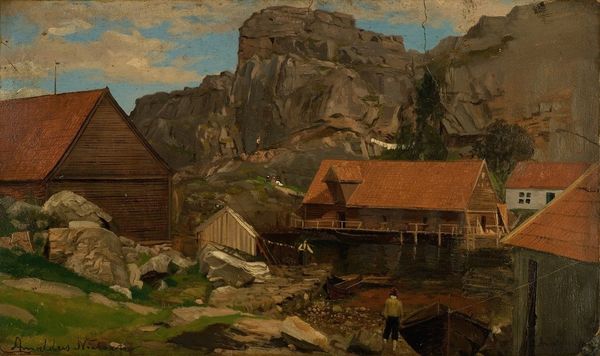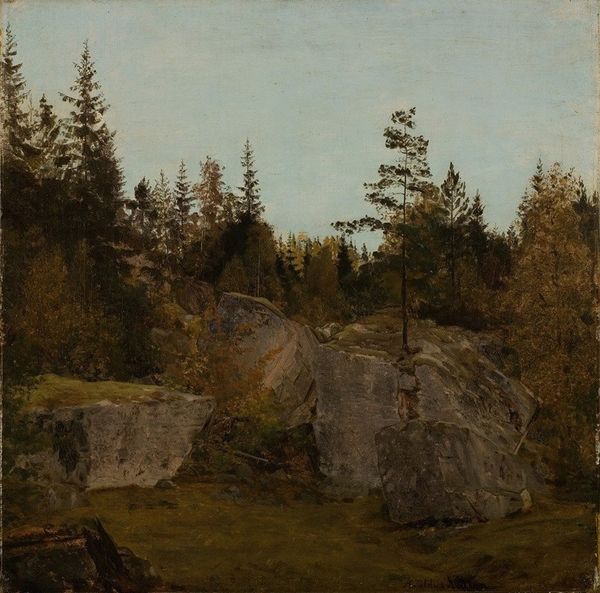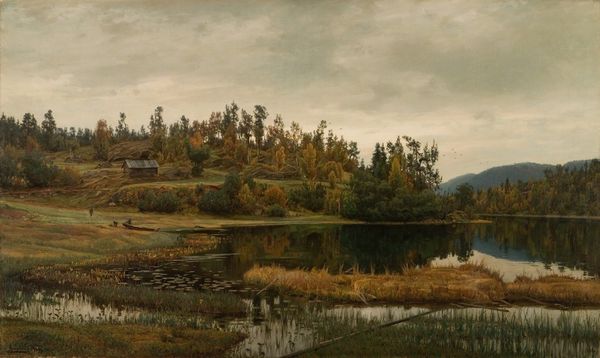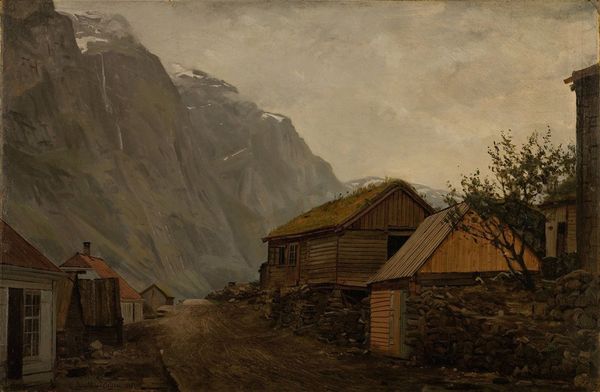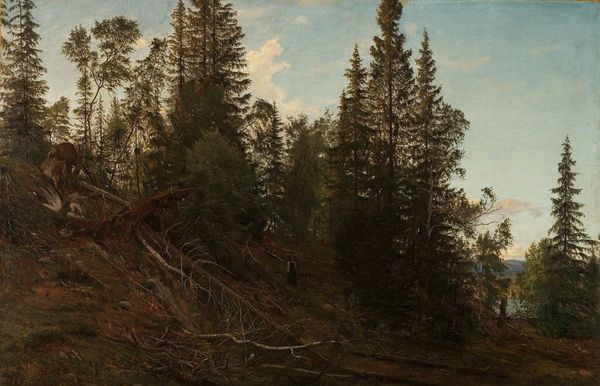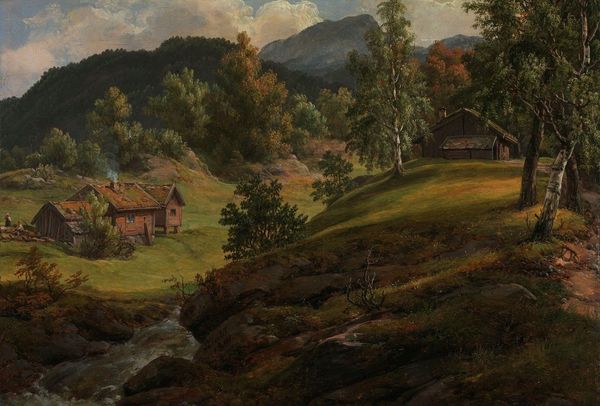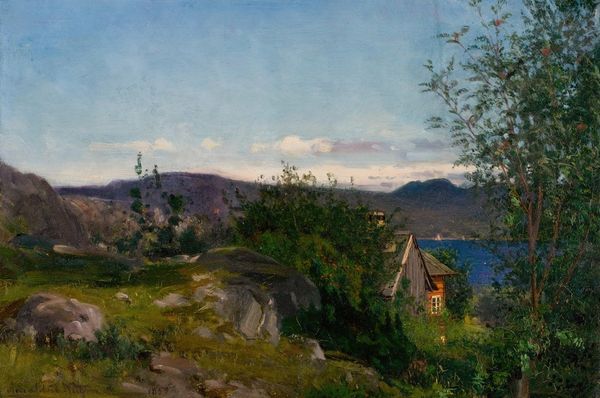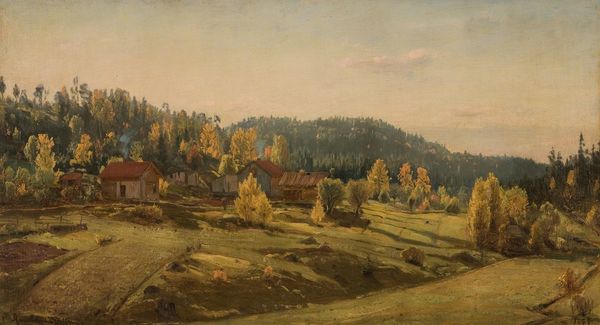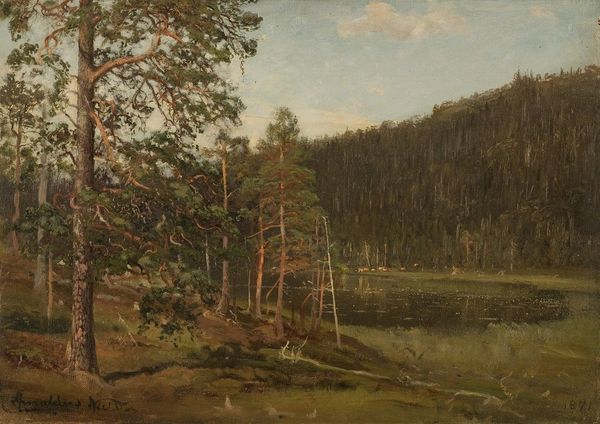
Copyright: Public Domain: Artvee
Curator: Standing here, I find myself captivated by the textures. The layering of the oil paint creates a palpable sense of materiality in Amaldus Nielsen's "Sommerfjøs," painted in 1861. Editor: Yes, immediately, I am struck by the painting's melancholic mood. It is as if Nielsen has captured a fading memory of rural life, filtered through the lens of the early Realists’ desire for objectivity. Curator: Let’s consider the labor involved in crafting a scene like this in 1861. We're not just looking at nature but a built environment that reflects specific skills and social organisation. The careful construction of the wooden structure with the sod roof, the stacking of stones, even the rough-hewn fence speaks volumes. What sort of labouring conditions can we assume were common for this style of house-building? Editor: Good question. Socially and culturally, the painting emerges during a time of rapid industrialization and rural to urban migration. Remember that museums at this time also promoted particular romantic visions of an independent peasantry to a newly forming middle-class. Does this quaint scene bolster such imagery, or subvert it somehow? Curator: It's not overtly critical, I agree, but notice the brushwork—how it shifts between meticulous rendering of the structure to almost gestural marks in the foliage. Nielsen acknowledges both the practical and romantic aspects. But I am interested in knowing more about the sourcing and production of paints, and their effect on the tones here. Were particular pigments commonly used by landscape painters associated with, for example, toxicity for workers? Editor: That is an important point. Certainly the rise of ready-mixed paints contributed to the expansion of amateur artmaking during this period. From the perspective of public consumption, one can imagine this painting adorning a middle-class home as a symbol of nostalgic yearning for the countryside—a deliberate escape from urban squalor made newly possible through commercial displays and affordable price-points. Curator: Indeed. Thinking about the painting this way reveals its connection to much wider patterns of labour, manufacturing, and the art market. Editor: It brings a renewed perspective to the quiet dignity it conveys, allowing one to envision the cultural forces and social circumstances behind its appeal.
Comments
No comments
Be the first to comment and join the conversation on the ultimate creative platform.

